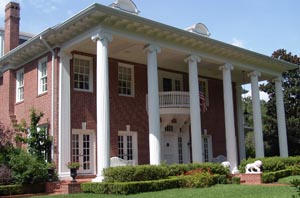History and Culture
Broadacres was designated as an historic district in 2007. It meets all six of the City of Houston’s criteria for designation. Broadacres is significant as one of Houston’s early master planned communities. It was designed by the architect William Ward Watkin, and the houses in the subdivision are by Houston’s most prominent architects of the time. These houses are excellent examples of the Revival styles most popular in the 1920s. In addition, the extensive landscaping and rows of oak trees along North and South Boulevard give the neighborhood a unified identity.
Broadacres is notable for its association with Captain James A. Baker and his son, James A. Baker, Jr., who spearheaded the development of the neighborhood. Captain Baker had served in the Confederate Army. He was elected to the Texas legislature and became a district judge in Houston. He later joined, and became a partner in, the law firm of Gray and Botts. James A. Baker, Jr., was also an attorney. He joined his father’s firm and eventually led it as Baker, Botts, Andrews and Wharton. Today, Baker Botts is one of Houston’s oldest and most prestigious law firms. Baker Jr. was an accomplished and influential city leader. His son, James A. Baker III, served as President Ronald Reagan’s chief of staff and as the Secretary of the Treasury and Secretary of State under Reagan and President George H. W. Bush.
The men who designed many of the homes in Broadacres were three of the most sought-after architects in Houston in the 1920s.
- William Ward Watkin was the founder and head of the architecture school at Rice University. Watkin designed the Rice campus and other prominent buildings in Houston, including The Museum of Fine Arts. In addition to Broadacres, he also laid out the Southampton subdivision. Watkin designed just one home in the Broadacres neighborhood: 1318 North Blvd.
- Birdsall P. Briscoe was one of the best and most well-known residential architects in Houston in the 1920s and 1930s. He designed four houses in Broadacres in partnership with Sam H. Dixon, Jr. After the partnership ended in 1926, Briscoe completed four more homes in the neighborhood (1323 North Boulevard).
- John Staub came to Houston in 1921 and entered private practice in 1923. He is closely identified with the River Oaks neighborhood. Staub designed the River Oaks Country Club building, Miss Ima Hogg’s mansion at Bayou Bend, and 31 other River Oaks homes. Staub was responsible for many fine homes in Houston and Galveston. He designed six houses in Broadacres.




